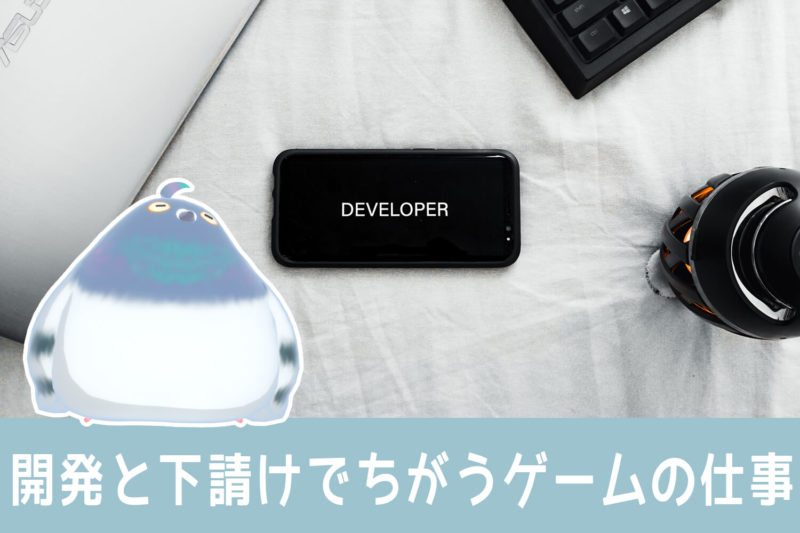
Many different types of work are involved in being an “artist who creates 3DCG for games”.
Another article is Summary of the work of game CG artists and what they are called. But this time it’s not about the differences in the work of different types of artists…
I would like to write about what 3DCG artists do, which varies by type of company.
When I changed jobs from a small game company to a small subcontracting company, I was surprised to find that the work content at the company was quite different.
You won’t know these differences until you work there, and since you may not have a chance to talk about them or hear about them, I thought I’d put them all together.
The main part of the story will be about the work that Toha worked for, both at a “game development company” and at a “3DCG production subcontractor”.
- Experience 1: Game Development Company
- (1) The specifications of what we make are rarely set in stone from the start
- (2) Start by thinking about the concept and design of what you want to create
- (3) The schedule is set over a long period, with deadlines at key points
- Impression: Game development is all about – knowing what it takes to make a game and how it flows
- Experience 2: 3DCG production subcontractor
- Summary: Game development & production subcontracting, gains, and difficulties are in each company
Experience 1: Game Development Company
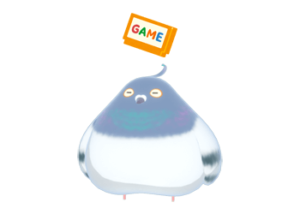
First, let’s talk about working for a game development company.
The game company that Toha worked for is what is known as a developer.
However, the game company that Toha worked for also published its games, so it was a company that was more of a developer but also had a publisher aspect.
The characteristics of Toha’s work as a 3DCG artist in such a game development company can be summarized as follows.
- The specifications of what we make are rarely set in stone from the start.
- Start by thinking about the concept and design of what you want to create.
- The schedule is set over a long period, with deadlines at key points.
I will look at each of the three listed in turn.
(1) The specifications of what we make are rarely set in stone from the start
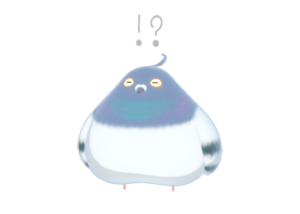
After all, this is the first thing to do.
Specifications are rarely fixed from the beginning and often changed later.
It is mainly the job of the planner to determine the specifications of the game. What kind of game should be played, how many and what kind of enemies should there be, how big should the stages be…
The general process is for the planner to decide on the game specifications like this, and then ask the 3DCG artist to create the character and enemy models, background models, etc. necessary to realize the game.
However, game specifications are not always so precise out of the blue.
In particular, the game company at which Toha worked had a development style that was based on “making airplanes as you fly them”, so there were a few times when the specifications for what we were making were set in stone.
So how do 3DCG designers create models and motions? In the case of Toha, we were asked to do so by the planners on a case-by-case basis.
For example, a planner might verbally ask you to create a model for a particular mechanism in a game.
When a model that has been created does not work well when implemented in a game, the artist and programmer may consult directly with each other to determine the data structure of the 3D model.
Then again, in game development, specifications often change or disappear midstream.
There were times when a 3D model that took a month to create would disappear with the entire specification, and the model would be put in storage.
Like this, It is normal for specifications not to be set in stone, and they often change later, which was my feeling when I was at the game company.
(2) Start by thinking about the concept and design of what you want to create
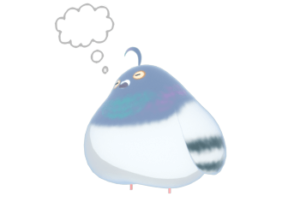
Next is this.
It is the job of the 3DCG artist to come up with ideas, concepts, and designs for what to create.
I think this is because we were a small game development company.
This may not be the case in large game companies, where the work of 3DCG designers is completely divided among them. (*Toha does not know the actual situation of large game companies, so I am imagining.)
The game company where Toha worked had a total of about 40 people, about half of whom were programmers and the other half were planners and designers.
Since there were only about 10 or so designers in total, there was no division of labor.
Sometimes the same artist would draw the concept art and create the 3DCG.
For example, if the director asks you to create a model of a certain character to be included in the game, the 3DCG artist’s work begins with thinking about the direction and design of the character’s appearance.
This is because even if the game role of that character has been determined, the appearance of the character is often not.
Even though we think about design, the artist does not have the right to make design decisions, so what we do would be something like the following.
- Step1
First, get some ideas! I’ll draw at least 3 rough designs.
- Step2
Ask the director to check the rough draft and get his/her opinion.
- Step3
If any of the three ideas are appealing to you, develop that idea, otherwise return to Step 1.
- Step4
Draw two or three rough designs developed from one idea that the director has pinned down.
- Step5
Ask the director to check it again and get his/her opinion.
- Step6
If you find a suggestion that you like, you can finalize it. If not, return to Step 4.
- Step7
This is it! and draw a design.
- Step8
Have the director check it again.
- Step9
If the design is OK, go to modeling; if NG, revise and return to step 8.
*In some cases, instead of drawing a rough design, a rough model may be made and checked.
In this way, coming up with ideas and designs for what to make as part of the 3DCG artist’s job.
This is not limited to modeling but also applies to the creation of motion and effects, as well as the look and feel of the UI.
Sometimes the planner would decide on a general direction, but if not, the artists would come up with their own ideas.
(3) The schedule is set over a long period, with deadlines at key points
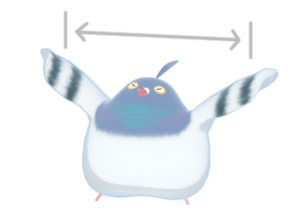
The third is this.
The daily schedule is not set in stone, but there are deadlines that must be strictly adhered to at key points.
This deadline that must be met is sometimes called a milestone.
Although we work backward from milestones to establish a rough schedule, the daily work schedule of each development staff member is not set in detail.
Perhaps some companies develop games on a strict daily schedule, but at the company where Toha worked, it was as if there was no schedule.
The schedule often changes due to changes in specifications, and often game development does not go according to schedule…
So Toha, while at the game company, was not that conscious of his schedule.
The development project itself is usually always behind schedule, and you are always busy whether you have a schedule or not.
However, as the milestone approached, the busyness accelerated, so about a month before the ROM submission, we sometimes had a crunch, a work schedule where “in principle, everyone works on Saturdays as well”.
Impression: Game development is all about – knowing what it takes to make a game and how it flows
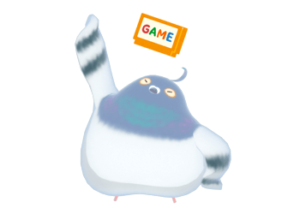
This is the impression of Toha, who worked for such a game company, which was small but also developed its titles.
- This is exactly what game development is all about! Image of
- I learned how a piece of game software takes shape.
- There is a strong sense of teamwork.
- Consultation with programmers and planners is essential to work
- The process from the idea to the design OK is the most difficult.
- The work is broad and shallow, and the knowledge and skills acquired are also broad and shallow.
Perhaps this feeling was stronger because it was a smaller company, but in any case, there was a feeling of working together as a team to create a game.
It is necessary to discuss something with planners, programmers, and other designers every day.
Thanks to this, I could always hear someone’s voice in the office, and the days were rather lively.
Also, the number of designers was small and the work was not completely divided, so sometimes I was modeling and other times I was creating UI, and sometimes I was working on various jobs at the same time.
And so it goes. I was able to gain a broad and shallow knowledge of the work required to develop a single game. This was interesting to me and I learned a lot.
If I had not had this experience at the game company, I would not have come up with the idea of making games on my own. Knowing how the game-making process works, I thought I would try it myself.
On the other hand, because of the broad and shallow nature of my work, I did not specialize in any one thing and became more knowledgeable, nor did I improve my specific skills in 3DCG significantly.
———-
Incidentally, in game development, the artist’s work is completed the fastest.
This is because at a certain point before the game is completed, the deadline for material data comes and the artist cannot put new data into the game.
The artist’s job then becomes less and less busy, even if the game development is not yet finished, as he or she only has to replace data for correction or brushing up.
What designers do in such situations varies from company to company, but at Toha’s company, all the artists were tested playing the game. (The more people looking for bugs, the better.)
It’s a lot of work, but if you keep doing it every day, you’ll get good at playing the game.
It was great to have an experience like this in terms of Toha!
Experience 2: 3DCG production subcontractor
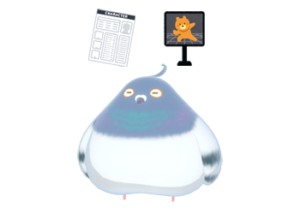
Now let’s move on to my work at a 3DCG production subcontractor.
The next company that Toha worked for after the game company was mainly involved in the contracted production of 3DCG content.
this is a not game company and we do not develop games. We are a company where almost all employees are artists.
But we often take on jobs from game companies to create 3DCG for their games. We were contracted to create character models, background models, motion, and effects.
In addition, since there are various types of 3DCG content, not only games, we sometimes receive work in the video industry, amusement machine industry, and VR/AR industry.
In such a subcontracting company, the characteristics of the work that Toha did as a 3DCG artist can be summarized as follows.
- Most of the time, we get the specifications of what we make first.
- What is to be made is fixed, so delivery date and quality are important.
- Schedules are often set tightly in days.
I will look at each of the three listed in turn.
(1) Most of the time, we get the specifications of what we make first
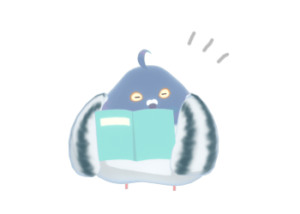
This was the first thing that surprised me when I moved to a 3DCG production subcontractor.
There are specifications! It is normal for the specifications of what we make to be fixed from the beginning.
When 3DCG artists are asked to create something for a job, it goes more smoothly if there are specifications.
This item cannot be neglected, especially if the company is going to commission work to another company or a freelance designer, as it relates to contract details and production costs.
Although it does not cost money to ask an artist within the same company to create a 3D model, when a company asks a subcontractor to create a 3DCG model, there is always a discussion of contracts and costs.
Without a proper understanding of the nature of the work to be undertaken, it is difficult for the subcontractor to secure the necessary schedules and personnel, or to estimate the production costs.
That is why in the case of subcontract 3DCG production work, specifications are almost always given by the client.
Specifications do not have a common national format, so the way they are put together and their contents vary from company to company. Some specifications are rough, while others are very detailed.
I sometimes heard artists complain that the specifications they received were too rough, but since Toha had rarely received a specification sheet before, I thought it was great just to have one.
In addition, the specifications given to the subcontractor are relatively unlikely to be changed in the process.
Game companies that subcontract work to subcontractors start with jobs that have fixed specifications and are easy to outsource. There are not many jobs that subcontractors take on that have a lot of uncertainties.
It is rarely the case with subcontract work that the 3D models we create are not used in the game after all.
(*Models may be modified after delivery and look slightly different in the production version.)
(2) What is to be made is fixed, so delivery date and quality are important
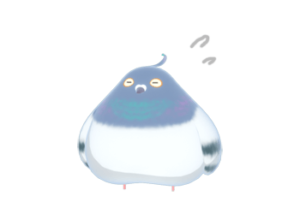
The next item is this.
What is to be made is fixed. It is important to both maintain the quality of work and meet deadlines.
In subcontracted 3DCG production, the client usually has a specific idea of what they want us to produce.
Also, when you take on a job, the delivery date of the job is determined well in advance. In other words…
The key to our work is to create products that meet the customer’s requirements and deliver them on time.
It is quite rare for a 3DCG artist at a company that does contract production work to think about the design of what he or she creates for a job, or to propose ideas to a client.
This is not the case for companies that are in a relationship with subcontractors rather than subcontractors, or companies that are also producing their original content while doing subcontract work.
But in the case of pure subcontracting work, the 3DCG artist is expected to
Even if the quality of the product is very good, it is bad if the delivery date is not met, and even if the delivery date is met, it is also bad if the quality of the delivered product is low and does not meet the customer’s requirements.
Of course, the work does not end with the creation and delivery of the 3D model, but rather, the submitted 3D model is checked by the client, and any corrections are handled.
As we receive checks and make corrections, the quality of what we produce will inevitably improve gradually.
However, if too many corrections are made and time is taken only to respond to corrections, the schedule for the next job will be squeezed and it will become difficult again to meet the next deadline.
(3) Schedules are often set tightly on days
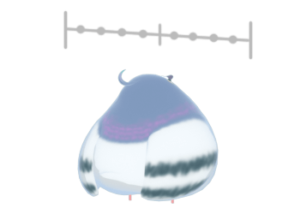
The last one is this.
Schedules are often determined by the number of days. The number of days scheduled is an important factor for money.
There are many forms of subcontractor work contracts, but I think most are either term-based or deliverables-based.
When the work is contracted on a term basis, the number of scheduled days is a factor that affects the estimated cost of the work and the actual costs incurred.
And that’s one of the reasons why…Subcontract work that is contracted on a term basis requires a detailed schedule to be provided to the client.
This means that each artist’s work schedule is set in terms of days.
Since Toha had always worked on a rough schedule at a game company, it was quite difficult for me to get used to the feeling of a subcontracted production schedule.
*This story is told a bit in another article Results Of Daily Recording In 3DCG Work and talks a little bit about it.
In subcontracted production work, if you cannot manage your schedule well, you will find yourself in a lot of trouble later.
If you look at the schedule and realize that you can’t make it on time as it is! If you can get the client to change the schedule, it is best to do so.
But if that’s not possible, you can either work overtime, go on holiday, or stay at the office…
Or sometimes the only way to make it on time is to get help from other artists who have more time in their schedules.
Impression: 3DCG craftsman of a game – Train own in the type and number of works
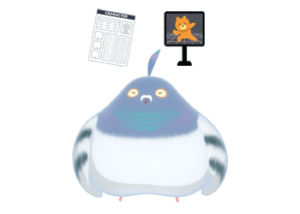
This is Toha’s impression after working for such a subcontracting company, which is small in scale but renowned for the quality of its work.
- Each employee is a 3DCG craftsman.
- Many jobs involve cutting out just one element that makes up the game.
- Less of a team effort (especially in character creation).
- Compared to game development, there is less to discuss.
- It’s hard to balance the quality and speed of work.
- When you specialize in one field of work, you acquire knowledge and skills in a specialized way.
The feeling of working together as a team is a bit thin, and there is an image of employees = 3DCG craftsmen gathered together and each doing their work.
I think this was more so because Toha was primarily in charge of character models. When we were working on large background models, we would split up the work as a team. (There was no division of labor for the characters.)
Each character modeler was responsible for his or her character, so consultations were usually limited to scheduling, quality, or technical issues.
The workplace was quite quiet, a far cry from the bustling atmosphere at the game company.
I think the number one change that has happened to TOHA since working for the 3DCG production subcontractor is that the modeling of characters has become much better than before.
In the case of subcontract work, you will be creating various game characters for unknown to well-known titles.
Furthermore, in the case of smartphone games, we sometimes work on a schedule of 10 days per character, so the number and variation of character models we create increases anyway.
At the beginning of another article on 3D models, I will discuss what you need to improve your 3DCG production The thing is…
(1) Things that need to be made a lot
(2) Things that need to be understood the way of think
Of these two types of training, of which (1) is undeniably trained.
However, if I had only worked for a subcontract 3DCG production company, I would not have had the opportunity to learn the whole picture of game development.
Sometimes we only deliver the Maya data of the 3D model we have created, and cannot output it to the actual game machine for confirmation. When I am not able to be involved in the project until the very end, I feel a bit of sadness.
———-
Incidentally, subcontracted production companies often receive work for well-known game titles.
The scale of development of a well-known game title is so large that it is rarely the case these days that a single publisher develops the game by itself. They are outsourced to many subcontractors.
However, sadly, even if you can work on the development of a famous game, you are often not allowed to tell anyone about it.
When a subcontractor takes on a job, they sign a Non-disclosure Agreement with the client, which may prevent them from disclosing the game title as part of the subcontractor’s development results.
This is the reason why when you look at a game company’s website, the titles of the games they have developed are sometimes not indicated.
I think it’s okay to say the ones with the company name in the staff credits. I think it’s a good idea, but my personal opinion and the rules of society are two different things.
Summary: Game development & production subcontracting, gains, and difficulties are in each company
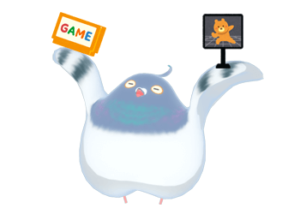
This article compares and summarizes the work of “game development companies” and “3DCG production subcontractors,” both of which Toha itself has experience working for.
Both of the companies that Toha worked for were small companies with less than 50 employees, so there are many things that would not apply to a larger game company or subcontractor.
Based solely on Toha’s experience, the following is a summary of the work he has done as a 3DCG designer for each company.
In the case of a game development company
- The specifications of what we make are rarely set in stone from the start.
- Start by thinking about the concept and design of what you want to create.
- The schedule is set over a long period, with deadlines at key points.
- This is exactly what game development is all about! Image of
- I learned how a piece of game software takes shape.
- There is a strong sense of teamwork.
- Consultation with programmers and planners is essential to work
- The process from the idea to the design OK is the most difficult.
- The work is broad and shallow, and the knowledge and skills acquired are also broad and shallow.
In the case of a 3DCG production subcontractor
- Most of the time, we get the specifications of what we make first.
- What is to be made is fixed, so delivery date and quality are important.
- Schedules are often set tightly in days.
- Each employee is a 3DCG craftsman.
- Many jobs involve cutting out just one element that makes up the game.
- Less of a team effort (especially in character creation).
- Compared to game development, there is less to discuss.
- It’s hard to balance the quality and speed of work.
- When you specialize in one field of work, you acquire knowledge and skills in a specialized way.
Even in the same job of “creating 3DCG for games,” there is a difference in the actual work done by a game development company and a subcontracted production company.
Toha was fortunate enough to experience different jobs at two different companies, so we have once again compared them.
Although the title “3DCG artist” is the same, the job description differs from company to company.
I hope this article has helped you to understand that.
Both jobs have their joys and difficulties, and the types of knowledge and skills acquired through the work are slightly different.
For more information about the work of 3DCG designers, which varies by job title, see What Is CG Artist’s Work? Summary Of Game-Related Work And What They Are Called, here you go.
Then I wrote an article Can Do Anything, Only Limit Is Own Imagination – Why Extend My Drawers. You can read it if you’d like~
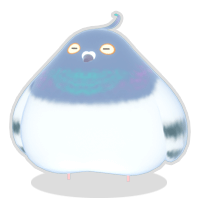
By all means!

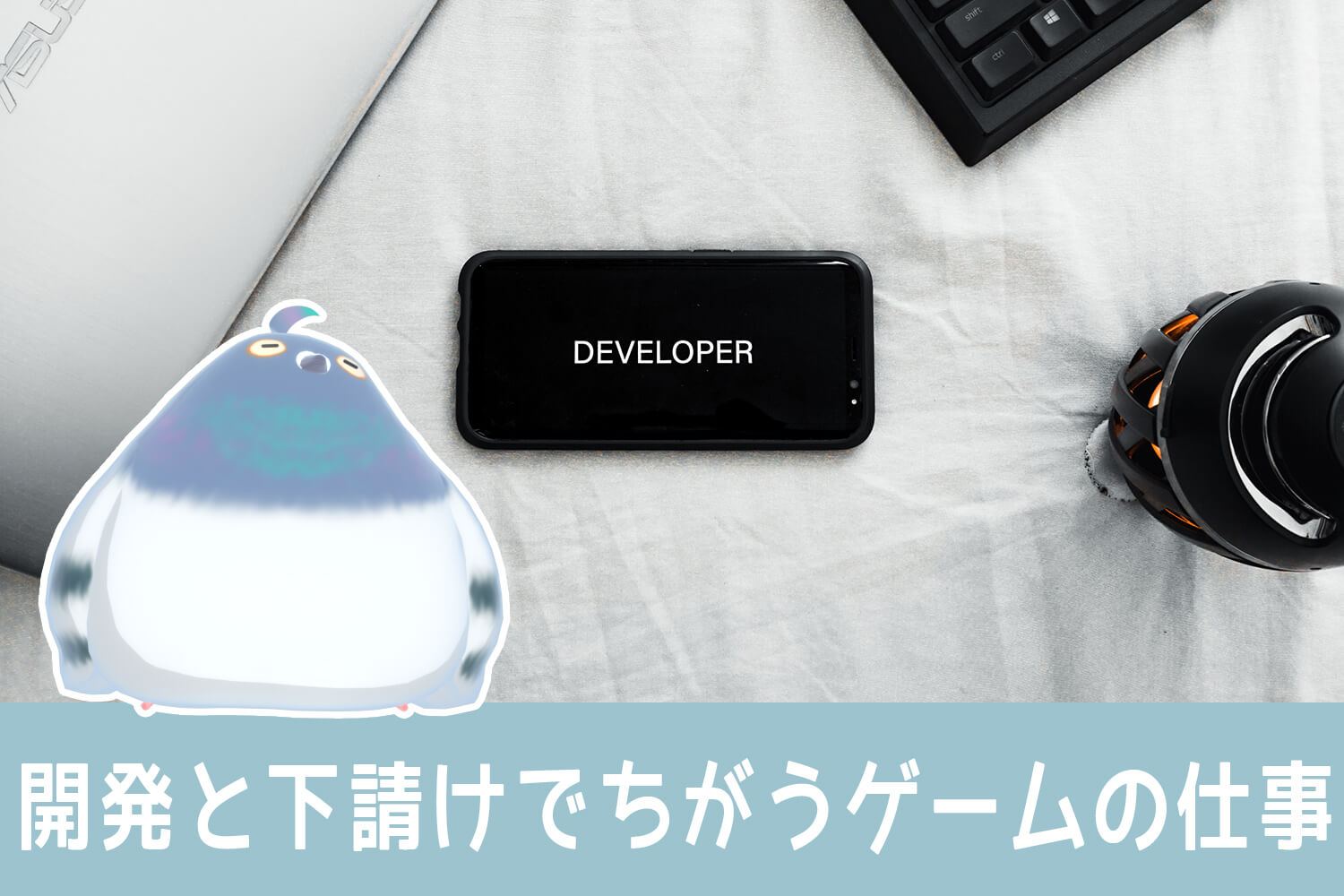




- Coments - コメント一覧